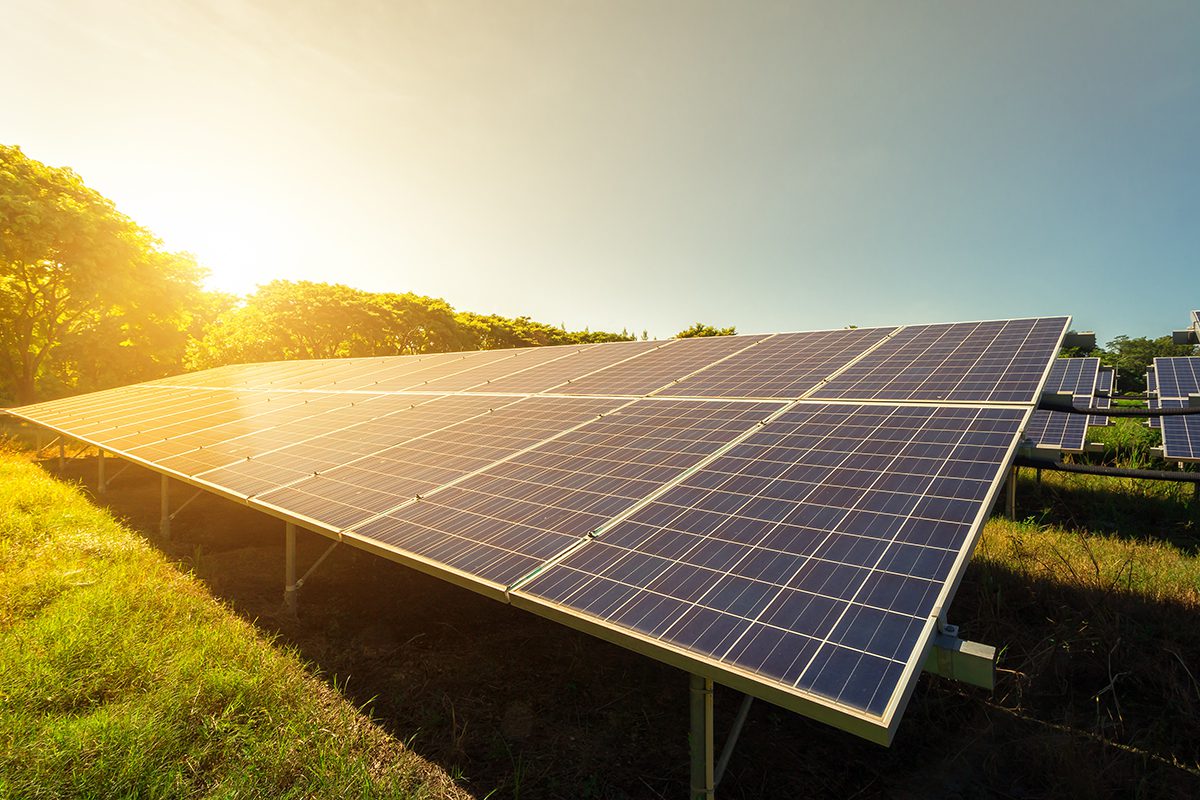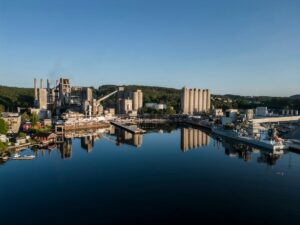

Researchers working on the ASTEP project, a European Union Horizon 2020 collaborative project, and a key initiative within the Crowdhelix Solar Energy Helix, have developed what they describe as a cutting-edge solar heating and cooling technology for dairy industry processes: the SunDial Solar Collector.
SunDial is undergoing trials at Mandrekas, a prominent dairy operation located in Corinth, Greece. Mandrekas’ specific requirements centred around building a single solution that can both heat steam to 175°C for milk pasteurisation and keep yoghurt chilled at around 5°C.
To maximise efficiency, SunDial harvests sunlight using a rotary system where eight mirror arrays are installed on a platform that tracks the sun. If trialled successfully, SunDial will lower operational costs for dairy manufacturers while also helping to decarbonise the production process through solar thermal technologies.
Lowering operational and installation costs is a key goal for researchers working on the ASTEP project, who designed SunDial in such a way that it can be installed easily using modular components.
Additionally, SunDial be adapted to complement different industrial processes and can be integrated into existing processes safely. The system can also use a two-axis tracking system without a significant increase in costs, leading to improved performance and higher operating temperatures.
Now at Technology Readiness Level 3, Prof. Antonio Rovira from National University of Distance Education (Spain) believes that ASTEP’s SunDial can help to lower energy consumption while maintaining productivity: “One of our case studies is a dairy that requires both the generation of steam and cooling. The ASTEP project proposes a viable concept to demonstrate the viability of using solar thermal energy for heating and cooling, that is both cost effective and environmentally responsible”.
The ASTEP project brings together world-leading academics, industry experts, and high-tech SMEs from 16 different European countries. It is also the key project within Crowdhelix’s Solar Energy Helix which aims to foster collaboration across solar’s rapidly expanding global value chain.
Crowdhelix CEO, Michael Browne, believes that the development of innovations like ASTEP’s SunDial can be accelerated by bringing innovative business leaders and thought-leading academics together so that they can collaboratively develop climate-friendly solutions that meet the needs of industry.
“Our Solar Energy Helix has become a thriving community of nearly 500 experts and stakeholders who are positioned at key junctions throughout the solar industry’s burgeoning value chains”.
“It is only by bringing together all the stakeholders across key strategic areas that you can build the solutions that will generate a significant impact”.
“ASTEP’s SunDial demonstrates what can be achieved when researchers and innovative businesses collaborate to construct a solution that can lower production costs and carbon emissions simultaneously.
“Building these teams can take time, which is why we have built an end-to-end open innovation platform that allows researchers and industry experts to build strategic partnerships and to showcase innovations to end users as soon as they’re developed”.
“Through our support, collaborative research teams can spend more time focusing on building impactful solutions like SunDial”.
- SEO Powered Content & PR Distribution. Get Amplified Today.
- PlatoData.Network Vertical Generative Ai. Empower Yourself. Access Here.
- PlatoAiStream. Web3 Intelligence. Knowledge Amplified. Access Here.
- PlatoESG. Carbon, CleanTech, Energy, Environment, Solar, Waste Management. Access Here.
- PlatoHealth. Biotech and Clinical Trials Intelligence. Access Here.
- Source: https://envirotecmagazine.com/2024/01/28/solar-solution-aims-to-reduce-dairy-production-costs-and-emissions/
- :has
- :is
- :where
- 10
- 11
- 12
- 16
- 2020
- 500
- 7
- 8
- 9
- a
- academics
- accelerated
- achieved
- across
- adapted
- aims
- All
- allows
- also
- an
- and
- ARE
- areas
- around
- AS
- At
- banners
- BE
- become
- believes
- both
- Bringing
- Brings
- build
- Building
- built
- burgeoning
- business
- Business Leaders
- businesses
- by
- CAN
- carbon
- carbon emissions
- case
- Case Studies
- ceo
- chain
- collaborate
- collaboration
- collaborative
- community
- Complement
- components
- concept
- construct
- consumption
- content
- Cost
- Costs
- countries
- cutting-edge
- dairy
- demonstrate
- demonstrates
- describe
- designed
- develop
- developed
- Development
- different
- disabled
- distance
- easily
- Education
- Effective
- efficiency
- eight
- either
- Emissions
- end
- end-to-end
- energy
- Energy Consumption
- environmentally
- Envirotec
- European
- European Countries
- european union
- existing
- expanding
- experts
- focusing
- For
- Foster
- from
- generate
- generation
- Global
- goal
- Greece
- Have
- help
- helping
- higher
- horizon
- http
- HTTPS
- if
- image
- impactful
- improved
- in
- Increase
- industrial
- industry
- industry experts
- industry’s
- Initiative
- Innovation
- innovations
- innovative
- installation
- integrated
- into
- IT
- jpg
- Keep
- Key
- leaders
- leading
- Level
- like
- located
- lower
- maintaining
- Manufacturers
- maximise
- Meet
- Milk
- mirror
- modular
- more
- National
- nearly
- needs
- no
- None
- of
- on
- only
- open
- open innovation
- operating
- operation
- operational
- or
- our
- partnerships
- performance
- platform
- plato
- Plato Data Intelligence
- PlatoData
- positioned
- process
- processes
- Production
- productivity
- prof
- project
- prominent
- proposes
- qualified
- rapidly
- Readiness
- reduce
- Requirements
- requires
- research
- researchers
- safely
- showcase
- significant
- simultaneously
- single
- SMEs
- So
- solar
- solar energy
- solution
- Solutions
- Soon
- Spain
- specific
- spend
- stakeholders
- Steam
- Strategic
- Strategic Partnerships
- studies
- Successfully
- such
- Sun
- sunlight
- support
- system
- Take
- teams
- Technologies
- Technology
- that
- The
- There.
- thermal
- These
- they
- this
- thriving
- Through
- throughout
- time
- to
- together
- Tracking
- tracks
- trials
- undergoing
- union
- university
- use
- users
- using
- value
- viability
- viable
- Way..
- we
- What
- when
- which
- while
- WHO
- why
- will
- within
- without
- working
- you
- zephyrnet









